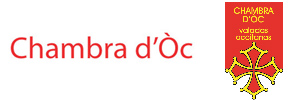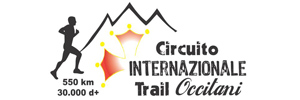From Vinadio to Sisteron, into the wild heart of Occitania
206 kM 11 days
It takes 11 days to cross the Alps and to realize how many different landscapes interpose between our congested valley floors, between one town and another, and between plains. This particular itinerary crosses many alpine valleys. Starting with the Italian Stura valley, an important transit way between France and Italy from time immemorial, via the Col of Maddalena or the Col de Larches with, the Ubaye valley; and then the valley of Tinée and of Verdon.The itinerary just touches the valley of Ubaye, which can be seen from the high crests. The walk follows reliefs decreasing in altitude, changing, day after day, from alpine forests into Mediterranean garrigue, up to the wide gulley of the Durance valley. Except for the few villages and hamlets of Vinadio, Pietraporzio, St-Dalmas-le-Selvage, Allos, Seyne and Sisteron, the itinerary is rather solitary, through picturesque pastoral landscapes. It may be rare to see a shepherd, but flocks of sheep are everywhere, guarded by Pyrenean sheep dogs and by unending electrified fencing. The higher pathways between the Colle del Ferro and the Col d’Allos reveal high alpine scenarios: meadows, stony ground, peat bogs and the beautiful larch and hooked pine forests which cover the valleys of the Mercantour National Park. This protected area, which is crossed from the second to the seventh stage of the walk, is spread over 68,500 hectares (actually 146,300 if we also consider the peripheral area), 6 valleys and 28 municipalities. It has a great variety of scenery and is rich in biodiversity, being the last important alpine elevation on the southern edges of the mountain chain overlooking the Mediterranean Sea. The park is rich in wildlife and marmots, chamois and mountain goats can easily be seen. The lammergeyer, the biggest European vulture, can also be sighted in its territory, after the reintroduction into the park through a project of collaboration together with other European countries. No less interesting are the modest reliefs of the Massif des Monges on the Pre-Alps of Digne, between Barles and Authon. These are bare windswept mountains which are interesting for their geological richness, for the spectacular ravines, named calanques, in grey and black marlstone and for the pastures with flocks of up to a thousand animals. The only thing missing in this paradise is actually man. If the villages of the Stura valley on the Italian side are reasonably inhabited, the French one is almost deserted. It is easier to understand the differences between the landscape on the two sides of the border by confronting data on population density of the two countries: 198 inhabitants per square km in Italy against the 113 of France. Another issue which stands out is the greater awareness of Occitan language and cultural heritage demonstrated through the use of flags with the cross of Toulouse, Occitan taverns, road signs and trail marks in Occitan which can only be seen in the Stura valley. The language is however spoken and understood on both sides of the Alps, with few variations in lexicon and pronunciation.
Stages:
01 – From Vinadio to Pietraporzio
02 – From Pietraporzio to the Refuge of Vens
03 – From Refuge of Vens to St-Dalmas-le-Selvage
04 – From St-Dalmas-le-Selvage to the Refuge of the Cayolle
05 – From the Refuge of the Cayolle to Allos
06 – From Allos to Col d’Allos
07 – From Rifuge Col d’Allos to Abbaye de Laverq
08 – From Abbaye de Laverq to Seyne-les-Alpes



